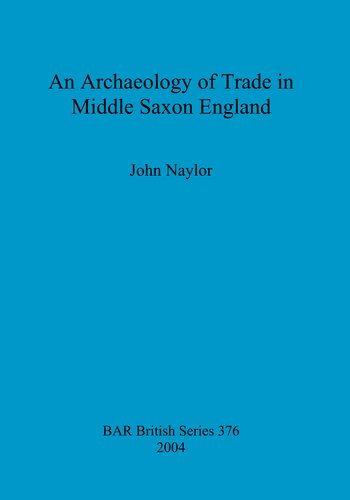

Most ebook files are in PDF format, so you can easily read them using various software such as Foxit Reader or directly on the Google Chrome browser.
Some ebook files are released by publishers in other formats such as .awz, .mobi, .epub, .fb2, etc. You may need to install specific software to read these formats on mobile/PC, such as Calibre.
Please read the tutorial at this link: https://ebookbell.com/faq
We offer FREE conversion to the popular formats you request; however, this may take some time. Therefore, right after payment, please email us, and we will try to provide the service as quickly as possible.
For some exceptional file formats or broken links (if any), please refrain from opening any disputes. Instead, email us first, and we will try to assist within a maximum of 6 hours.
EbookBell Team

4.8
104 reviewsThe aim of this book is to provide a regional component to the study of the early medieval economy (Middle Saxon England), and from this, to re-assess trade during the period. The work looks at the archaeology of trade in middle Saxon eastern England, based around the regional analysis of a range of data intended to reflect different aspects of the Anglo-Saxon economy. In broad terms the aims are twofold. Primarily, the book works towards a new understanding of the operation of trade on a regional basis and at all levels, i.e. local to international networks of trade. Secondly, it critiques and challenges traditionally held views of an urban-centred economy based around the long-distance trade in prestige goods. These central aims are further refined into a number of research questions that are explored through the project. These are: To what level were rural regions involved in trade? How was trade organised in middle Saxon eastern England, and how might any regional differences be explained? What was the nature of the involvement of royalty and the church in early medieval trade? These questions form the core of the aims for the book. It is divided into six chapters, each chapter designed to examine an aspect of early medieval trade.